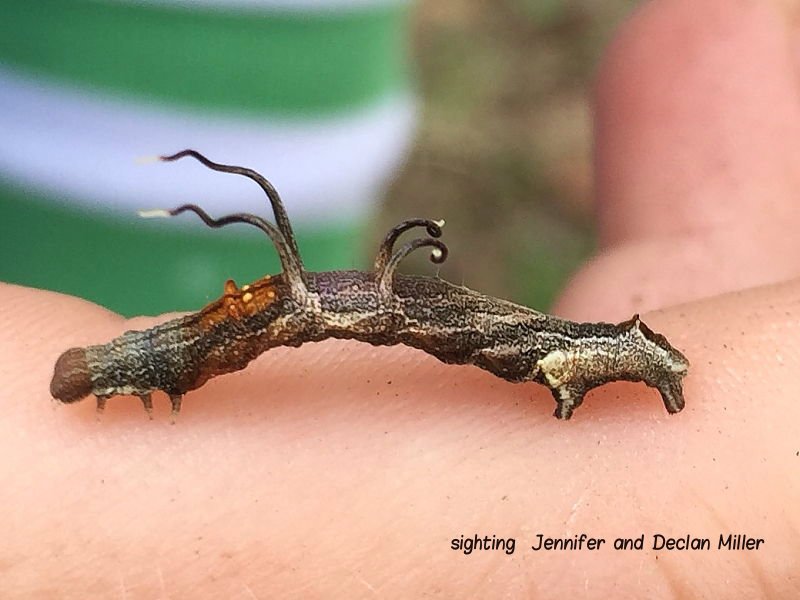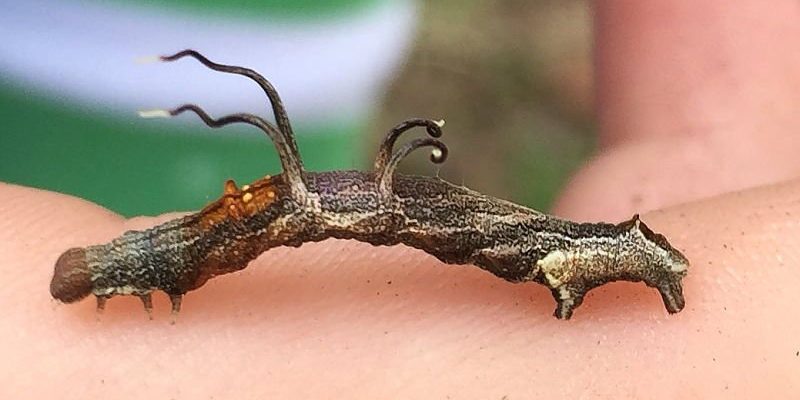
Inchworms, which belong to the **geometer moth** family, go through some pretty incredible changes as they grow. When they reach a certain size, they pupate, which means they enter a cocoon stage. This phase is not just a waiting game but a critical part of their development. Let’s dive into what this process looks like, how it impacts their lives, and why it’s so important to the ecosystem.
What Are Inchworms?
Before we get into pupation, let’s take a moment to understand what inchworms actually are. The term “inchworm” is commonly used to refer to the larvae of moths from the **Geometridae** family. These little guys are known for their unique, inching motion, which is how they got their name. They often look like tiny caterpillars, but they don’t have the same build. Instead of having a thick body, inchworms are slender and elongated, making them quite agile.
You might spot inchworms on trees and plants, where they often blend in seamlessly with their surroundings. Their coloring can range from green to brown, helping them evade predators. As they munch on leaves, inchworms play a role in the ecosystem, contributing to plant health and serving as food for birds and insects.
The Life Cycle of Inchworms
The life of an inchworm is a journey through several distinct stages: egg, larva (that’s the inchworm), pupa, and adult moth. Let’s break this down a bit:
1. **Egg Stage**: Female moths lay eggs on plant leaves, and these tiny eggs will soon hatch into larvae.
2. **Larval Stage**: This is when they’re called inchworms. They spend their time eating and growing, which can take several weeks.
3. **Pupal Stage**: This is where pupation comes in. The inchworm forms a cocoon and enters a transformative phase.
4. **Adult Stage**: Finally, the inchworm becomes a moth, emerging to start the cycle anew.
Each of these stages is crucial, and the transition from larva to pupa is especially fascinating.
What Is Pupation?
Pupation is a transformative stage in the life cycle of an inchworm. It’s the moment when these little caterpillars, after munching their way through leaves, decide it’s time to change. You might be wondering: why do they need to pupate? Well, this stage allows them to develop into adult moths. Here’s how it works:
– **Finding a Safe Spot**: Before they pupate, inchworms look for a safe place, often on the underside of leaves or in sheltered areas. This is crucial for protection from predators.
– **Creating a Cocoon**: Once they find their spot, inchworms spin a cocoon around themselves. This is not just for show—it’s a protective barrier that keeps them safe while they undergo a significant transformation.
– **Metamorphosis**: Inside the cocoon, the inchworm undergoes metamorphosis. This means its body breaks down and reforms into the adult moth. It’s like a complete makeover!
How Long Does Pupation Last?
The duration of pupation can vary, depending on factors such as species, temperature, and food supply. Generally, inchworms can stay in the pupal stage for about **two weeks to several months**. Isn’t that wild? The length of time often hinges on environmental conditions. For instance, in warmer climates, the process may speed up, while colder temperatures can extend it.
During this time, the inchworm is quite vulnerable. It’s crucial to avoid disturbances, as any disturbance can result in harm. Think of it as a sleep phase; they might look inactive but are very much still at work inside the cocoon—transforming!
Why Is Pupation Important?
Pupation is more than just a phase for inchworms; it plays a vital role in our ecosystem. Here’s why:
– **Biodiversity**: By undergoing metamorphosis, inchworms contribute to the diversity of moth species. This variety is essential for a balanced ecosystem.
– **Food Source**: Adult moths emerge ready to take part in the food web. They attract birds and other insects, creating a cycle of life.
– **Pollination**: Many adult moths, including some that emerge from inchworms, are important pollinators. This means they help plants reproduce, contributing to the health of our environment.
Honestly, without this pupation process, we’d miss out on many of the benefits that come from these little beings.
Common Questions About Inchworm Pupation
As you dive deeper into the world of inchworms, you might have a few questions. Here are some that often pop up:
– **What do inchworms eat?** Inchworms primarily feed on leaves, particularly from trees and shrubs. They’re picky eaters, often preferring certain species.
– **What happens if an inchworm is disturbed during pupation?** Disturbing an inchworm during pupation can be harmful, potentially stopping its metamorphosis or causing it to abandon the process altogether.
– **Can you raise inchworms at home?** Yes! If you find some inchworms, you can observe their life cycle. Just ensure you provide a safe environment with plenty of leaves to munch on, plus a cozy place for pupation.
Understanding the pupation process of inchworms opens the door to appreciating these small yet significant creatures. They may seem simple, but their transformation is nothing short of remarkable. Inchworms tell a story of growth, change, and the interconnectedness of life.
So next time you see one inching along, remember that this little fellow is on an incredible journey, one that benefits not just itself but the entire ecosystem. If you can, take a moment to observe, to appreciate, and maybe even to learn a little more about how nature works. It’s full of surprises, just waiting for us to discover!

